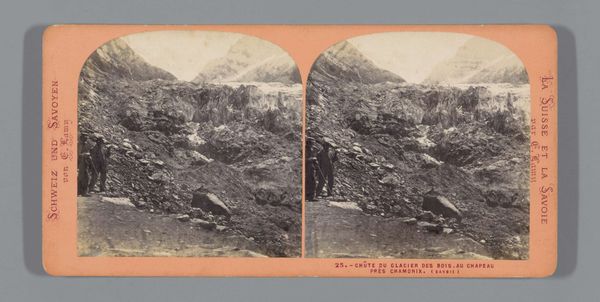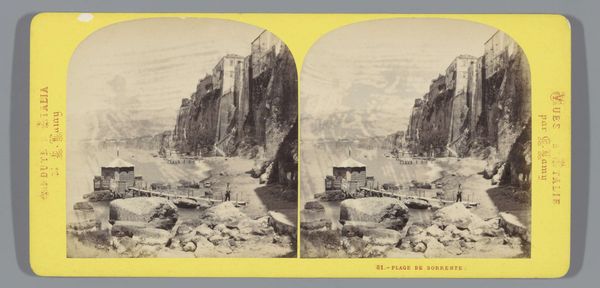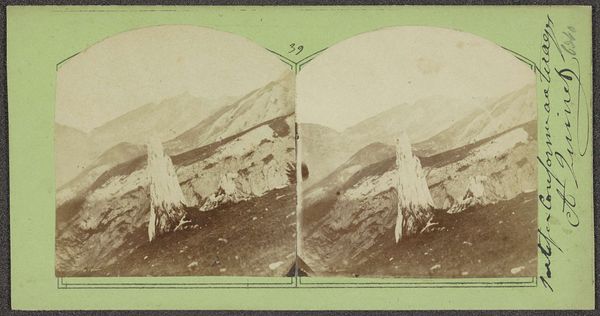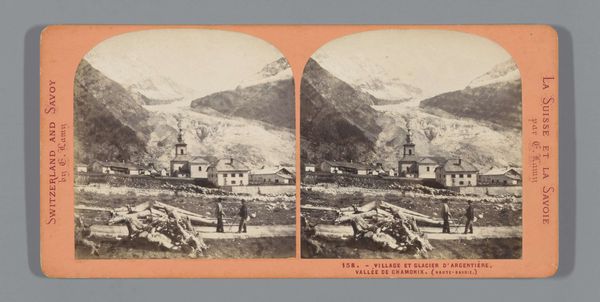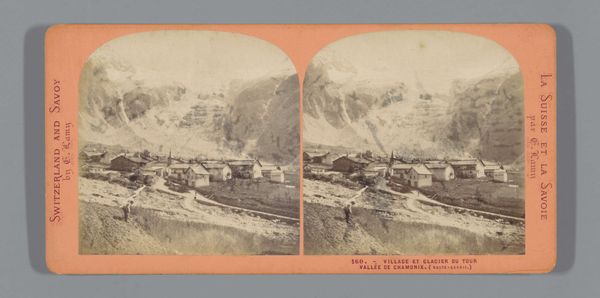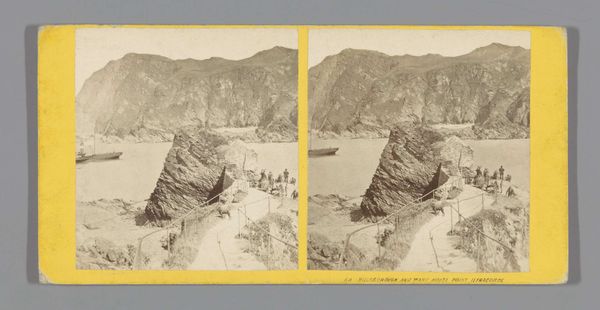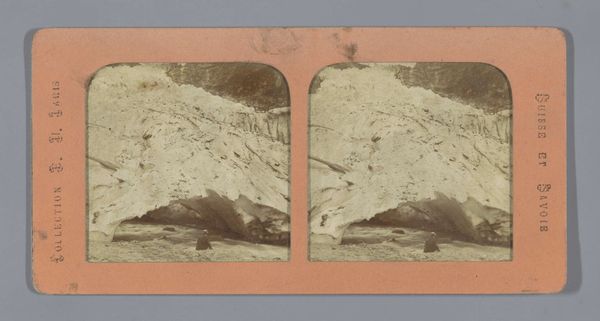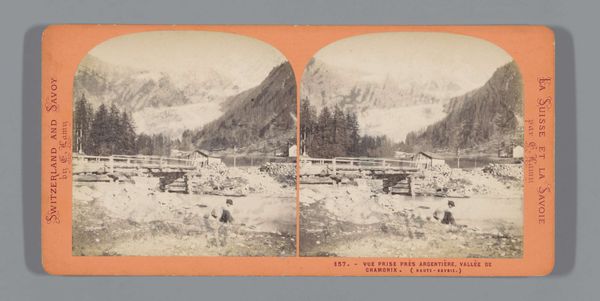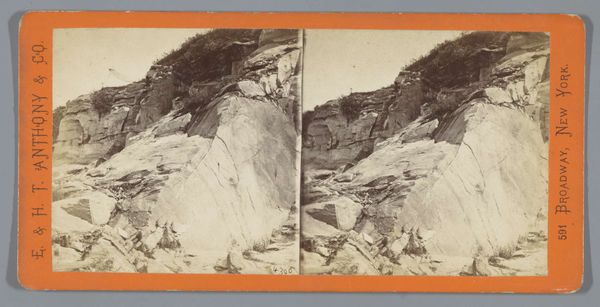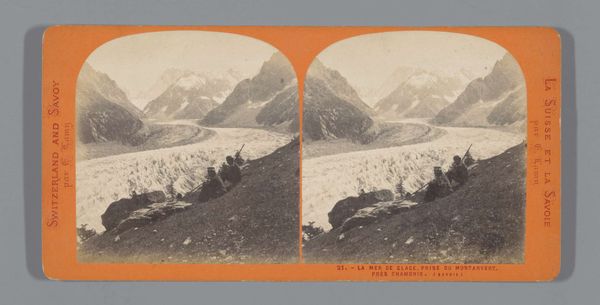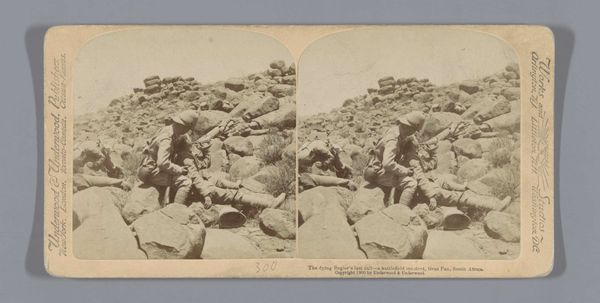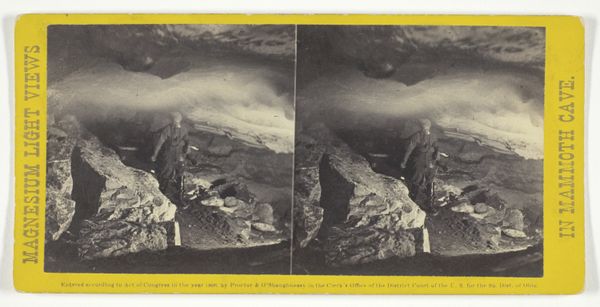
photography, gelatin-silver-print
#
water colours
#
landscape
#
photography
#
gelatin-silver-print
#
realism
Dimensions: height 85 mm, width 170 mm
Copyright: Rijks Museum: Open Domain
This stereoscopic photograph of the source of the Arveyron River was made by E. Lamy in France, likely in the late 19th century, when this technique was all the rage. The image presents us with the dramatic scene of glacial meltwater gushing from the foot of a glacier, with a lone figure standing atop one of the rocks. What does it mean to create an art object from such a scene? The rise of landscape photography coincided with the development of tourism and the growing fascination with the natural world. The heroic figure in the landscape taps into a set of cultural references that were codified by Romantic painting, and suggests a sense of awe at the sublimity of nature. This was also the era in which Alpine Clubs were formed; in which middle-class men and women, usually urban dwellers, were keen to prove themselves in the face of nature’s challenges. Historical archives of tourism and the history of Alpine Clubs can give us a better understanding of this image. Understanding art means looking at the conditions that enable both its production and reception.
Comments
No comments
Be the first to comment and join the conversation on the ultimate creative platform.
